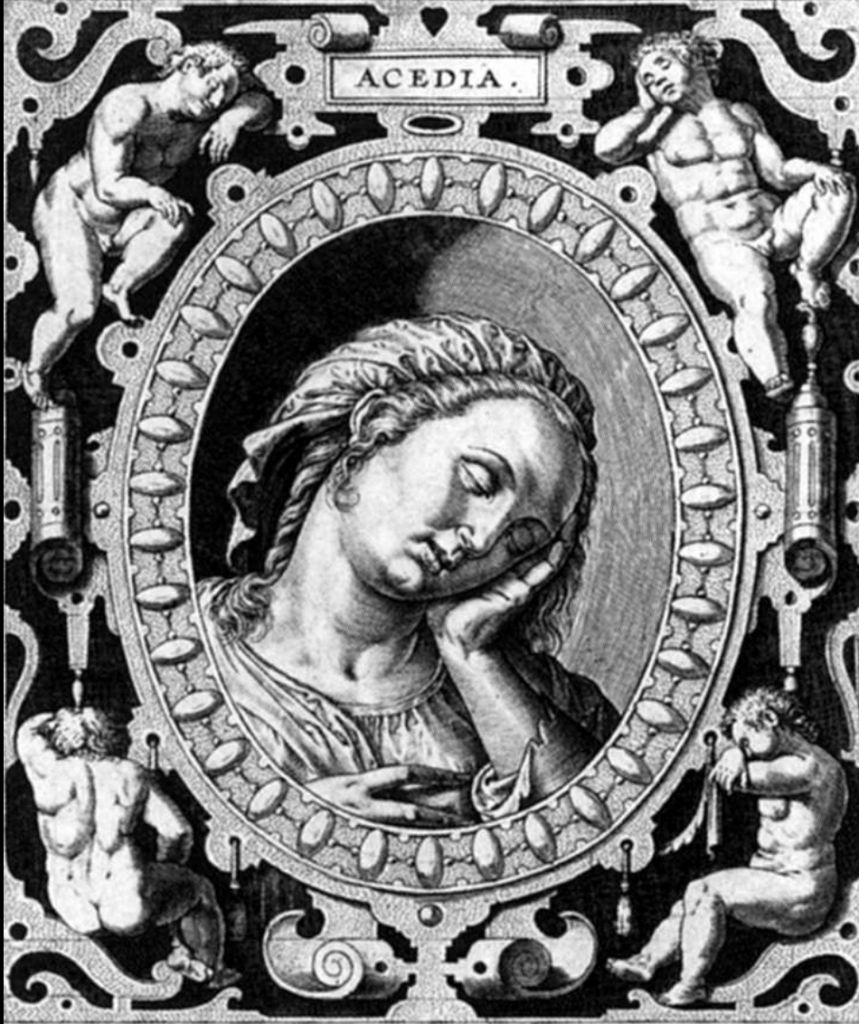Thanks to Natalia Bradshaw for sending me the perfect word to describe life under lockdown: ‘Acedia’. According to Wikipedia the ancient Greeks used this term for “a state of listlessness or torpor, of not caring or not being concerned with one’s position or condition in the world.” The Christian Church made it into a sin called “Accidie”, in which guise it would be familiar to anybody who has grown up with Catholic guilt, the Protestant work ethic, or the advanced sense of responsibility one finds in so many migrant families.
I find myself lapsing into this torpor whenever I’m between pieces of writing, so the obvious remedy is to push on to the next essay or column. It’s hard to imagine what it must be like for someone who is out of a job and sitting at home going stir-crazy. There’s only so much distraction one can tolerate before the urge arises to do something vaguely meaningful. Although I sometimes wonder if we’re too quick to psychologise all our problems, converting mere laziness or crankiness into a “mental health” issue, the mind does have its own unhappy chemistry.
It may be a symptom of Acedie that I can hardly be bothered railing against the politicians this week although they’ve done nothing to endear themselves to anybody. Neither can I bear growling at the ABC, although it’s depressing to watch the national broadcaster growing ever more self-indulgent, overrun with narcissists who consider themselves “stars”.
The column this week is an oblique compensation for not being able to write about the Metropolitan Museum show in Brisbane. Instead, I’ve looked at the three-part PBS documentary series on the Met, watchable on ABC iview. I was anticipating something along the lines of the very good overview of the Kunsthistoriches Museum, Vienna, (The Great Museum) that appeared as a feature-length film in 2014. But the Met and the PBS filmmakers had different ideas, deciding that viewers should be given a long-winded account of how the museum has coped with COVID-19, how it feels about social justice issues, and how hard it works to raise money.
In brief, they managed to make the experience of one of the world’s greatest, most exciting art museums into a bromide. I’m not in any way opposed to museums rethinking their approaches to issues of race and gender, but I’m thoroughly sick of them using these topics as PR material to demonstrate to the world how caring and sharing they are. Virtue signalling is now the greatest spectator sport in the realm of the arts. It’s a feel-good thing for many people and a cynical exercise for others. It could be argued that the female and indigenous artists who benefit from such ideological imperatives are usually no less of an élite group than the Dead White Males who formerly ruled the roost. It’s in the very nature of museums to create élites. Secondly, it’s a travesty when artists are preferred or rejected according to whether their work deals with desirable political issues. The successful work of political art is first of all a successful work of art. Political correctness in itself is no guarantee of quaity – quite the contrary.
The art column looks at these questions and relates them to the local establishments – which won’t please the good folk at the Art Gallery of NSW, but I don’t write these things because I’m desperate to have friends in high places.
The film column goes off in the opposite direction, dipping into gothic horror schlock in the form of the Stan series, Chapelwaite. It features Adrien Brody as a man who returns to his home town and has to deal with all the bad blood generated by his clan. By episode four, which is as far as I got, the series has already sampled most of the standard horror movie motifs and scenarios. Nevertheless, it’s surprisingly good entertainment and far less scary than watching Gladys’s daily COVID briefings.

